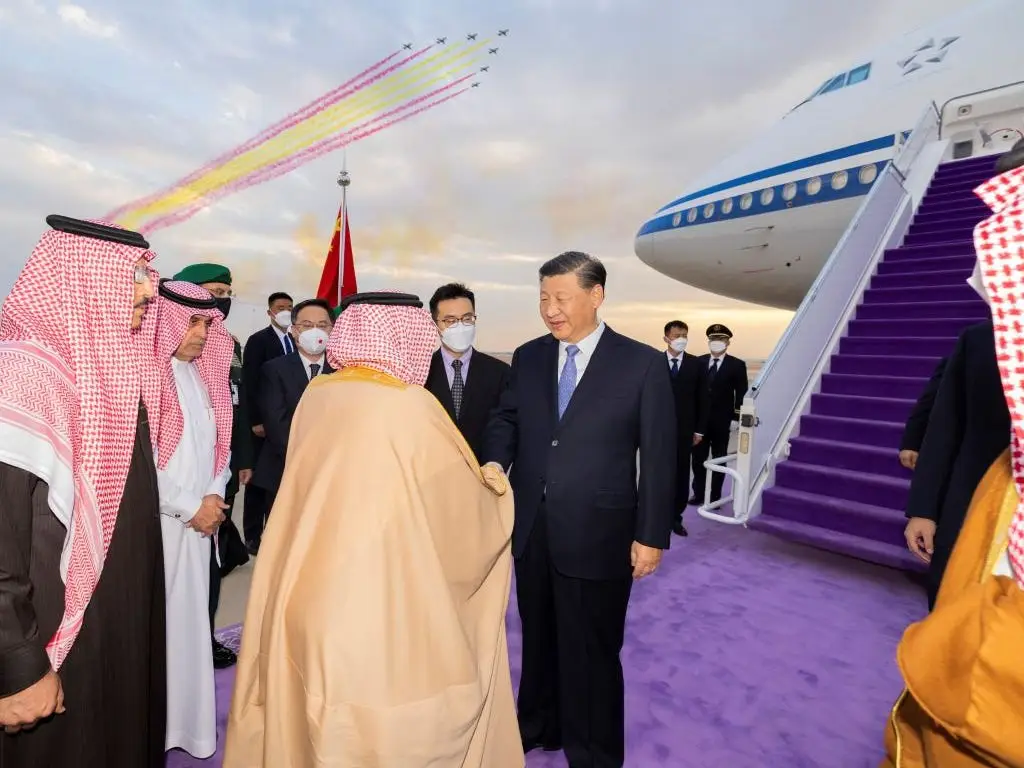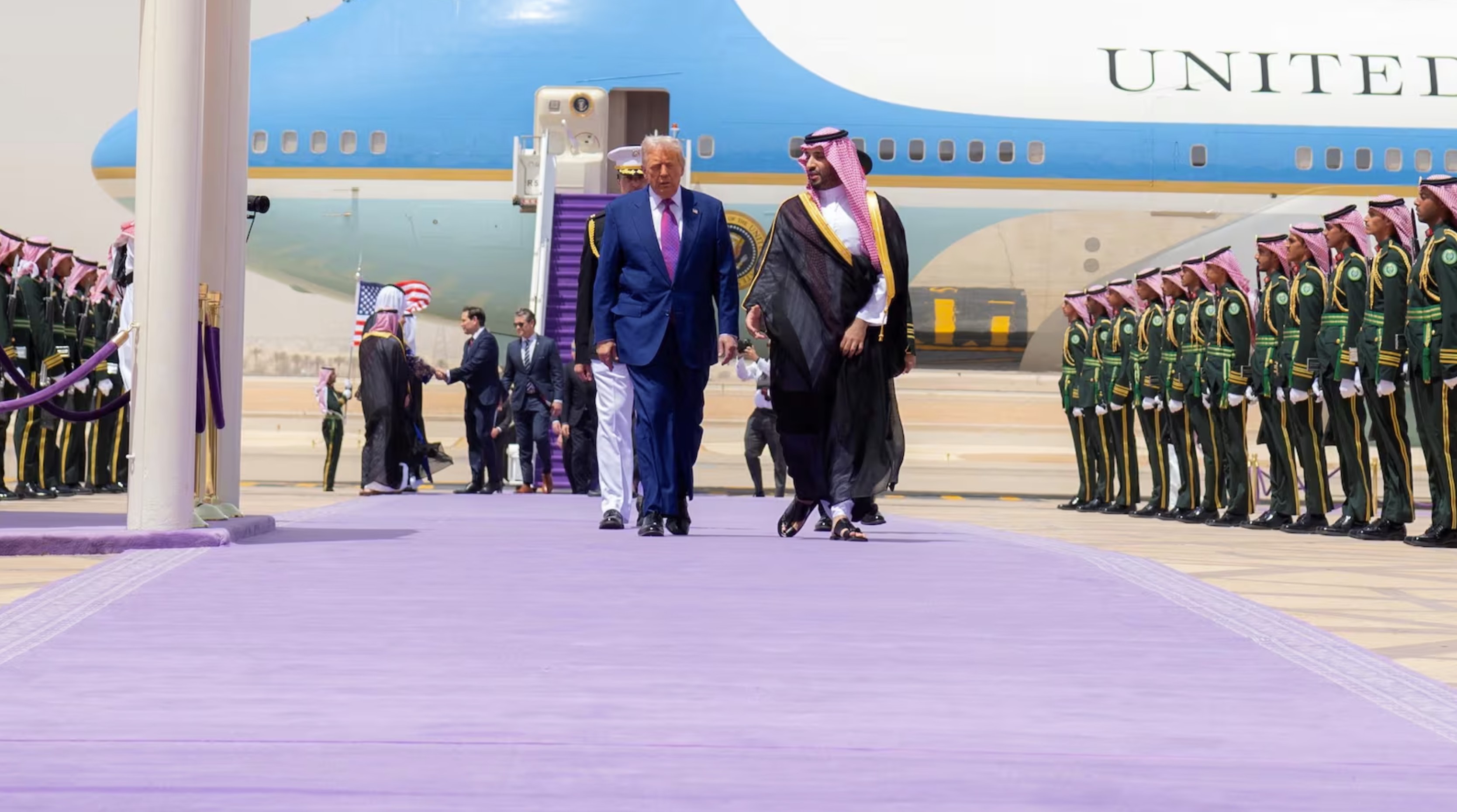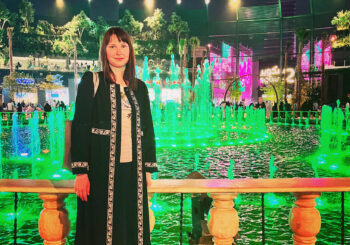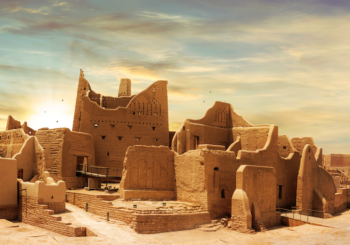When President Donald Trump stepped off Air Force One in Riyadh for his first overseas visit of his second term in May 2025, the familiar fanfare of an official welcome awaited him. But one detail stood out to Western press: the carpet beneath his feet was not the traditional red seen at most diplomatic receptions worldwide. Instead, it was a striking shade of lavender.
Saudi Arabia’s adoption of the lavender carpet is more than a stylistic decision. It reflects a deliberate cultural shift rooted in symbolism, national identity, and the Kingdom’s broader transformation.
Historically, red carpets have been used across the globe to welcome dignitaries and signal prestige. The tradition dates back centuries, with roots in ancient Greece and later royal courts in Europe. Red became the universal standard for formality and honor.
But in 2021, Saudi Arabia made a distinct choice to depart from this norm. The Kingdom replaced the red carpet with a lavender one during official state visits, receptions, and events involving high-ranking guests. Since then, lavender has become a signature of Saudi protocol, appearing in ceremonies welcoming global leaders and royalty.
When the lavender carpet made its debut in 2021, it garnered global media attention. Photos of French President Emmanuel Macron, Chinese President Xi Jinping, and now President Donald Trump walking across the distinctly colored carpet highlighted Saudi Arabia’s efforts to stand out diplomatically and visually.
This small but significant change has since become an iconic element of the Kingdom’s statecraft; subtle yet meaningful in redefining tradition.

Why Lavender?
The color lavender was chosen deliberately for its strong connection to Saudi Arabia’s natural and cultural landscape. It reflects the lavender-hued flowers that blanket vast stretches of the desert during spring, particularly in the northern and central regions of the Kingdom. These blooms, such as the Rhanterium epapposum (locally known as Arfaj), paint the landscape in soft purples and light violets during seasonal rains.
Beyond its natural ties, lavender also carries symbolic meanings: dignity, elegance, and tranquility; qualities that align with the image Saudi Arabia seeks to present on the world stage. The shift signifies a desire to assert a unique Saudi identity in global diplomacy, rather than relying on inherited international customs.
More Than a Color: Sadu Weaving and Cultural Heritage
Beyond the color choice, the carpets used in official ceremonies also incorporate Sadu weaving, a traditional Bedouin textile art that was inscribed on UNESCO’s Intangible Cultural Heritage list in 2020.
Sadu weaving is typically practiced by Bedouin women using ground looms and natural fibers such as wool or goat hair. The result is a durable, warp-faced textile known for its vibrant geometric patterns and symmetry. Traditionally used in tents, rugs, and camel saddles, Sadu motifs carry deep cultural significance, often symbolizing nature, life stages, and tribal identity.
By integrating Sadu patterns into the design of the lavender carpet, the Kingdom not only adds visual richness but also pays homage to its nomadic heritage; blending tradition with modern statecraft in a subtle yet powerful way.
A Reflection of Vision 2030
The introduction of the lavender carpet coincided with Crown Prince Mohammed bin Salman’s push for cultural rebranding under Vision 2030, a national strategy to diversify the economy and redefine the Kingdom’s global image. As Saudi Arabia moves to position itself as a modern, forward-facing nation, visual elements like the lavender carpet contribute to a broader narrative of cultural pride and sovereign distinction.
In this context, the carpet becomes more than decoration. The lavender carpet is not just a patch of color beneath the feet of world leaders. It is a statement; an assertion of Saudi Arabia’s identity, heritage, and intent to forge its own path in international relations. With its hues inspired by desert blooms and its design rooted in Bedouin craftsmanship, the lavender carpet blends past and present, tradition and transformation.








Comments (0)